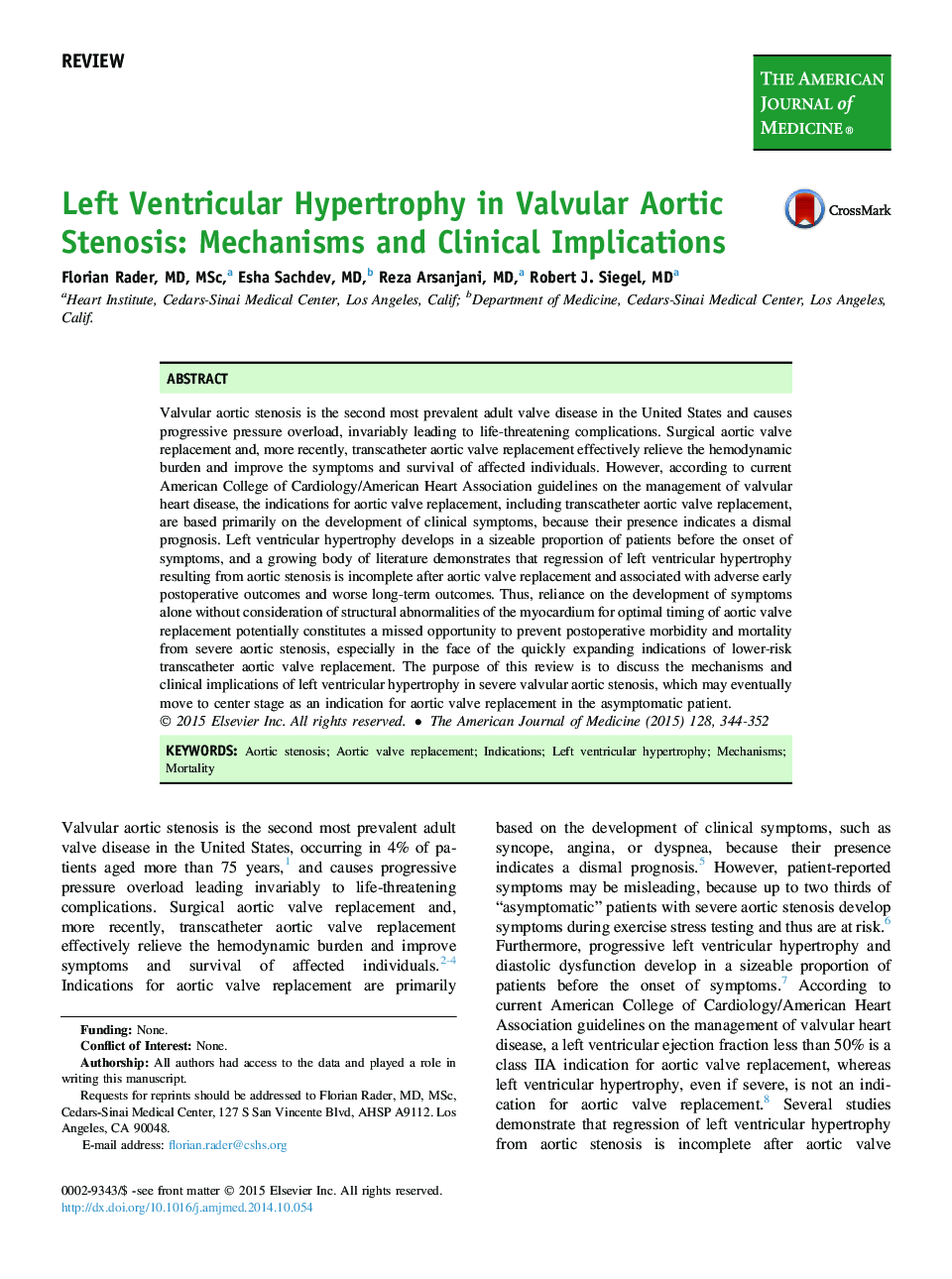| Article ID | Journal | Published Year | Pages | File Type |
|---|---|---|---|---|
| 2719247 | The American Journal of Medicine | 2015 | 9 Pages |
Valvular aortic stenosis is the second most prevalent adult valve disease in the United States and causes progressive pressure overload, invariably leading to life-threatening complications. Surgical aortic valve replacement and, more recently, transcatheter aortic valve replacement effectively relieve the hemodynamic burden and improve the symptoms and survival of affected individuals. However, according to current American College of Cardiology/American Heart Association guidelines on the management of valvular heart disease, the indications for aortic valve replacement, including transcatheter aortic valve replacement, are based primarily on the development of clinical symptoms, because their presence indicates a dismal prognosis. Left ventricular hypertrophy develops in a sizeable proportion of patients before the onset of symptoms, and a growing body of literature demonstrates that regression of left ventricular hypertrophy resulting from aortic stenosis is incomplete after aortic valve replacement and associated with adverse early postoperative outcomes and worse long-term outcomes. Thus, reliance on the development of symptoms alone without consideration of structural abnormalities of the myocardium for optimal timing of aortic valve replacement potentially constitutes a missed opportunity to prevent postoperative morbidity and mortality from severe aortic stenosis, especially in the face of the quickly expanding indications of lower-risk transcatheter aortic valve replacement. The purpose of this review is to discuss the mechanisms and clinical implications of left ventricular hypertrophy in severe valvular aortic stenosis, which may eventually move to center stage as an indication for aortic valve replacement in the asymptomatic patient.
